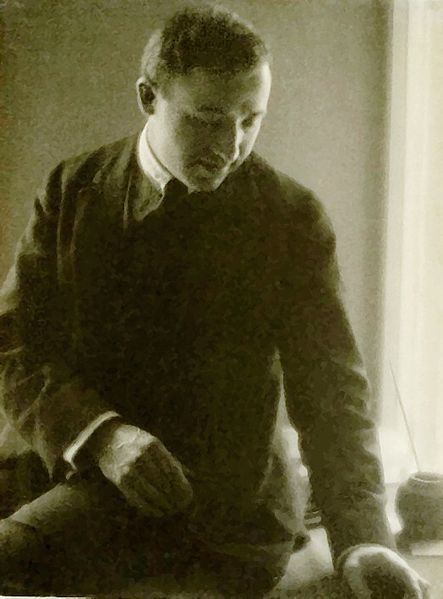| Max Weber | |
|---|---|
 |
|
| Born | April 18, 1881 |
| Died | October 4, 1961 |
| Nationality | Polish-American |
| Field | Painting |
| Works | View Complete Works |
Max Weber was a Polish-American painter who was born in Bialystok, which was then part of Russia, in 1881. His Jewish family emigrated from Bilaystok to the United States when the artist was aged 10.
He was interested in art from an early age, and went to study the subject in the Pratt Institute in New York. His tutor in the Pratt Institute was Arthur Wesley Dow, an artist who had worked previously with Paul Gaugin.
When he was 26, Weber moved to Paris to continue his studies, under the guidance of Robert Delaunay, and during this period he was greatly influenced by contemporary artists such as Picasso, Rousseau and Matisse. His Composition with Three Figures, painted in 1910, clearly shows the artist was inspired by the cubist movement.
After 4 years in Paris, he returned to New York, where he drew on his European experience to produce many works in the cubism style, and established himself as one of the great American cubist artists.
291 Gallery
Weber’s reputation received a huge boost when he was invited to exhibit at Alfred Stieglitz’s 291 Gallery, at that time the most prestigious gallery for modern art in New York.
His success was to prove short-lived. In 1913, he submitted several works for consideration for the most important avant-garde exhibition, the Armory Show. The organizers decided not to exhibit some of his works, and Weber was so incensed by this decision that he withdrew all his paintings from the exhibition. This move was to prove disastrous for his career.
He continued to produce works of abstract art, experimenting with synthetic cubism and futurism, but his works were not well received by critics, and were generally ignored by leading figures in the art world. He died in relative obscurity in 1961.
Works
Weber’s best known works date from the early 20th century. Typical examples of his modernist style include Chinese Restaurant, Rush Hour in New York, Study for Russian Ballet, painted in watercolors and Avoirdupois, an oil on canvas painting, all done in 1915.